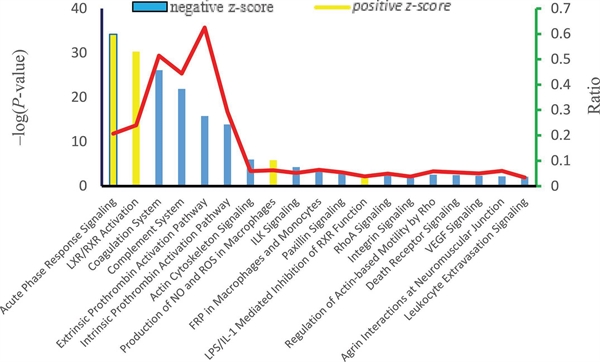- You are here: Home > Research > Research Progress
High-altitude hypoxia (HAH) could result in a pathological state in mammals, such as the dysfunction of lung, brain, mesentery, peripheral vessels and retina. As an important lactating cows breed, Jersey cows are famous for the high quality milk, especially for high contents in milk fat and protein, which are well-received by Tibetans to produce ghee that is indispensable in daily life.
Practices have proven that the performance of hybrid progeny crossbred by Jersey cows and native cattle improved significantly, especially for birth weight, feed utilization efficiency, growth rate, milk production and quality.
In order to analyze the molecular mechanism of high altitude adaption for dairy cows, a research team of the Institute of Subtropical Agriculture (ISA) of Chinese Academy of Sciences spent a few years on study of high altitude adaption mechanism in ruminants and got important findings using the proteomics and microRNA microarray techniques.
They found that the serum level of IgM, IL-2, IL-6 and TNF-α decreased for Jersey cows from high-altitude area in Tibet, and it resulted from biological processes including stress response, localization and signal transduction. Additionally, Jersey cows could be adapted to high-altitude stress by inhibiting the acute phase response, coagulation system, and complement system and promoting LXR/RXR activation. It could deduce that Jersey cows might adapt to high altitude hypoxia through regulation of inflammatory homeostasis.
The research was supported by The Ministry of Science and Technology of thePeople’s Republic of China, Chinese Academy of Sciences, China Hunan ProvincialScience and Technology Department, and Department of Finance of Tibet Autonomous Region.
The study entitled “Integrative plasma proteomic and microRNA analysisof Jersey cattle in response to high-altitude hypoxia” has been published in Journal of Dairy Science, details could be found at https://www.sciencedirect.com/science/article/pii/S0022030219302516
Contact: Zhou Chuanshe
E-mail: zcs@isa.ac.cn
Institute of Subtropical Agriculture, Chinese Academy of Sciences

Figure 1. Gene ontology (GO) classification diagram of (A) DEP and (B) miRNA. (Image by Zhou Chuanshe)

Figure 2. Canonical pathways enriched in Jersey cows exposed to high-altitude hypoxia by integrative analysis. (Image by Zhou Chuanshe)
Address: Mapoling of Changsha City, Hunan province, P.R.China.Tel: +86-731-4615204 Fax: +86-731-4612685

